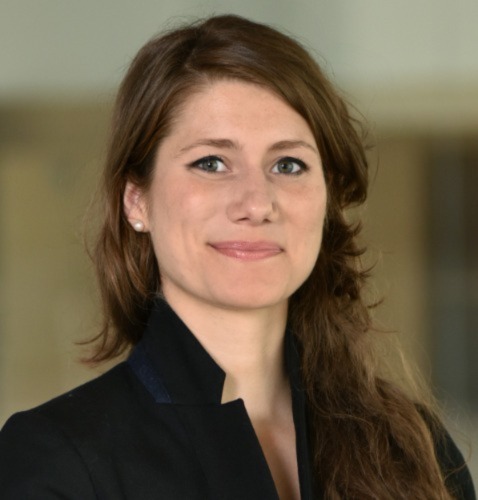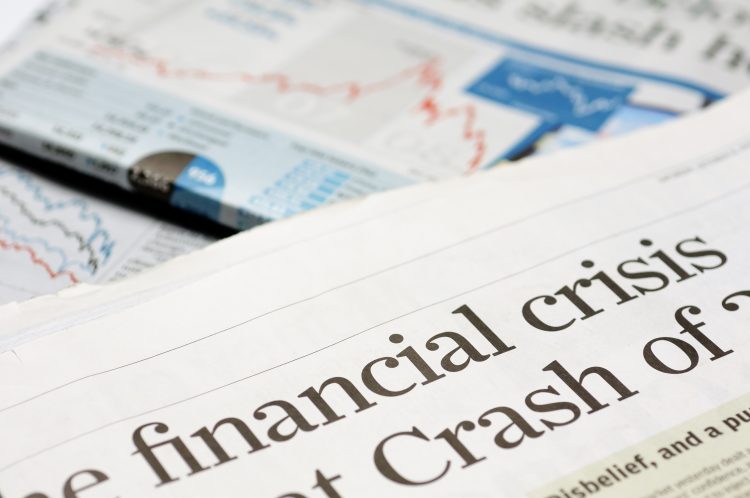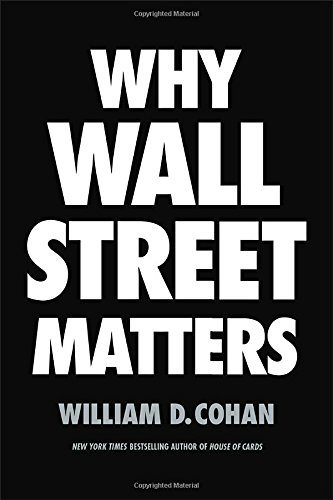This article was originally published in the 2017 Olin Business Magazine.
In the 1946 Frank Capra classic film It’s a Wonderful Life, George Bailey, played by James Stewart, must deal head-on with a bank run as the panicked customers of the Bailey Brothers’ Building & Loan demand to withdraw all of their money simultaneously. Bailey attempts to calm the crowd with a simple lesson in how a bank takes in short-term deposits and lends that same money to borrowers on a long-term basis.
As the residents of the fictional Bedford Falls learn, maintaining a balance between liquid deposits and illiquid loans is a delicate business for banks. This Hollywood version of a bank run has a happy ending, of course. That’s not the case in the real world. Panics, whether real or imagined, can send disruptive economic ripples through a small town, an entire nation (1929 in the United States), or around the world as happened in the 2008 financial crisis.
Circumstances and triggers for panics may appear to be different, but an economic model devised in the early 1980s by Olin Business School professor Philip Dybvig demonstrates that all bank runs share the same DNA. In 1983, Dybvig and his coauthor, Douglas Diamond, published what would become a seminal paper in the field of financial economics, “Bank Runs, Deposit Insurance, and Liquidity,” which introduced a model that explained why banks are subject to runs.
“Diamond and Dybvig were path-breaking when they proposed that banks specialized in creating liquid claims against illiquid assets,” according to Anil K. Kashyap, the Edward Eagle Brown Professor of Economics and Finance at the University of Chicago’s Booth School of Business. He credits Diamond and Dybvig with transforming bank research in 1983: “Banking research prior to this point was pretty primitive. Banks were perceived as organizations that facilitated certain transactions for their customers, not as intermediaries that performed a unique service.”
The “Diamond-Dybvig model” quickly became synonymous with the study of banking, financial crises, liquidity, and bank runs. From academic conferences and economics courses to the hundreds of papers it has spawned, the model needs no introduction. If you google the model’s moniker, you will see their paper has been cited more than 11,000 times since its publication in 1983.
In a special issue of Economic Quarterly published by the Federal Reserve Bank of Richmond and dedicated to the Diamond-Dybvig model in 2010, Edward Simpson Prescott writes, “Their model has been a workhorse of banking research over the last 25 years and during the recent financial crisis it has been one that researchers and policymakers consistently turn to when interpreting financial market phenomena.”
On the eve of the 35th anniversary of Diamond-Dybvig, Olin Dean Mark Taylor, a noted financial economist in his own right, sat down with Philip Dybvig, coauthor of the eponymous model and Boatman’s Bancshares Professor of Banking and Finance at Olin, to learn more about its origins, its longevity, and its relevance to the global financial system today.

Banks are fragile
DEAN TAYLOR:
So, it’s been 35 years since the publication of the original Diamond-Dybvig paper, and that’s had a tremendous influence on the banking industry and on financial regulation. What is the key message of the model?
DYBVIG:
The key message is that banks tend to be fragile because of the services that they provide, namely taking in short-term deposits and making long-term loans. Banks are providing liquidity, but we say it’s fragile because depositors have the option to withdraw their money whenever they want, and it’s difficult to predict when they will withdraw. If people are worried about the bank’s ability to give them their money back, that tends to make the bank unstable. If everybody does take their money out at the same time—a bank run—the bank will fail because it won’t be able to cover all the withdrawals.
DEAN TAYLOR:
You did this research back in the 1980s. And there hadn’t been a bank run in the United States since the Great Depression, some 50 years or so earlier. What made you think about this topic at that time?
DYBVIG:
Doug [Diamond] and I knew each other from grad school at Yale. A few years later, I was teaching at Princeton and he was teaching at the University of Chicago [Booth]. We ran into each other at a professional meeting and said, let’s go get a beer. Doug said, “You know, I think there are a lot of opportunities for modeling things in banking using game theory.”
I didn’t know much about banking. Bank runs sounded like a multiple equilibria problem, and I assumed there was already a paper about that. But there wasn’t, and in the end that was only a small part of our paper. If it had just been modeling bank runs as a rational multiple equilibria problem, I don’t think it would have had the kind of impact it has had. I think what’s more important about the paper is that we have a workhorse model of liquidity and explain why liquidity is important and why it is that liquidity tends to cause banks to be unstable.
Deposit insurance
DEAN TAYLOR:
In 1933, Federal Deposit Insurance was created to prevent future bank runs. And it seemed to be quite effective from the Depression to the 2008 financial crisis.
DYBVIG:
When we first presented the paper at Wharton, we actually got some pushback. Somebody in the audience said, “You know there aren’t any bank runs anymore. Why should we care? Why are you interested in economic history?” I don’t think there’s anything wrong in doing economic history. I think it’s interesting to look at that. You learn from looking at past problems about what you need to do to avoid problems in the future. Obviously, we’ve learned that deposit insurance is good. Complete deposit insurance is better.
“This paper gives the first explicit analysis of the demand for liquidity and the ‘transformation’ service provided by banks.”
“Bank Runs, Deposit Insurance, and Liquidity,” The Journal of Political Economy, Vol. 91, No.3 (June, 1983).
DEAN TAYLOR:
Why would full deposit insurance versus the current FDIC limited insurance be a good idea?
DYBVIG:
Having less than full deposit insurance provides depositors with an incentive to monitor the bank. The problem is that the monitoring by depositors is not beneficial socially. A good example is the failure of Continental Illinois in Chicago and its seizure by the FDIC in 1984. When the bank failed, a lot of the international depositors took out their money and they withdrew it right before the bank closed. So they were monitoring carefully and their monitoring was successful at benefiting them privately, but it also caused great headaches for the bank regulators who then had to deal with this huge capital outflow and ended up making concessions that they should not have had to make otherwise to the bondholders and the bank holding company.
Capital requirements
DEAN TAYLOR:
In terms of the recent financial crisis, liquidity plays a major role when it comes to capital adequacy requirements. Does the Diamond-Dybvig model have anything to say about capital adequacy requirements?
DYBVIG:
What we learn about capital adequacy in the Diamond-Dybvig model is that if you impose higher capital adequacy requirements, then you’re limiting the amount of liquidity creation that the banks can do. And that’s a concern. In principle, you could have lots of liquid assets in the bank and then the bank stock would be very liquid. But in practice that’s just not really feasible.
In the Diamond-Dybvig model, in order to have a stark example, we assume that the bank’s assets are riskless. And this is not a bug, it’s a feature. The thing is that banks are unstable even if the assets are completely riskless. Everybody understands that banks can fail if the assets are risky and if the asset value goes down enough, the bank’s going to fail. What’s interesting is that the model shows there is an intrinsic instability there even if the assets are riskless.
If you look at the capital adequacy requirements that were imposed around the time we wrote the paper, those were based on bank examiners going in and looking in detail at the bank’s books, talking to the lending officers, looking at all the documentation, and if necessary, talking to the customers. They had a job like old-fashioned accountants. The bank examiners were supposed to form an opinion on the safety and soundness of the firm. As we move towards more international, standardized regulation, we’ve replaced that kind of a regulatory system largely with a system based on accounting numbers, which is much coarser information and much easier to manipulate. And so, in the 2008 crisis, a lot of the problems had to do with banks that were taking on a lot of risk—and the risk was not detected by the capital adequacy formulas.

Policy implications of Diamond-Dybvig
DEAN TAYLOR:
So, what are the key policy implications that drop out of the Diamond-Dybvig analysis?
DYBVIG:
It may sound obvious, but the policy implication that’s most direct is that we should protect ourselves from bank runs. They can really damage the economy. Bank runs are bad in the Diamond-Dybvig model because they interrupt real production of goods and services when bank loans are recalled. That’s important. The real cost is that you liquidate projects (financing new construction, new ventures, etc.) before they’re done. That damage can be avoided, and we talk about several different mechanisms for doing that in our paper.
One mechanism is deposit insurance. Deposit insurance makes it possible for people who need their money to withdraw unimpeded, and provides peace of mind to those who don’t need money and who leave it in the bank. I think deposit insurance is important for the stability of the banking system.
A less efficient response to bank runs was used during the Great Depression: the so-called “bank holiday” where banks closed their doors for several weeks and suspended the convertibility of deposits into money in order to stop the run. But the problem is that a “bank holiday” also stops people who actually need the money from getting it, so the social cost is very high.
The third possibility that we talked about is lending by the central bank. In the United States that would be the Federal Reserve, as a lender of last resort, that can provide a service similar to deposit insurance by lending banks money.
Regulation and the next financial crisis
DEAN TAYLOR:
You have advocated the reinstatement of the 1933 Glass-Steagall Act, which separated commercial and investment banking. It was reversed in 1999 by the Gramm-Leach-Bliley Act, which repealed the restrictions on affiliations between banks and securities firms. Why?
DYBVIG:
I’d like to see more regulation in the form of a modern Glass-Steagall that limits what banks and insurance companies can do since they are involved with retail customers. They have explicit and implicit guarantees by the government, and they should be limited in what they can do. I would also like to see a little bit of freeing up the other institutions to let them do what they need to do in the economy.
If these sorts of limitations had been in place before the 2008 crisis—without anticipating the form of the crisis—it should have been possible to avoid the crisis, because the banks would not have been allowed to buy credit default swaps and AIG would not have been allowed to have a proprietary trading floor that sold credit default swaps.
“In 1986, we said one of the dangers of regulating banks too tightly is that other institutions may come in that fulfill the roles that the banks are not fulfilling.
They would be unstable for the same reason banks are, and subject to runs. And that’s a pretty good description of the 2008 financial crisis and the role of shadow banking and the repo (re-purchase) market in the crisis.”
—Philip Dybvig
DEAN TAYLOR:
Do you think it’s likely there will be another financial crisis?
DYBVIG:
Yes.
DEAN TAYLOR:
And in the foreseeable future, in the next five, ten years?
DYBVIG:
I wouldn’t be surprised. I don’t think regulators and policymakers have settled it, and they haven’t gotten things to a point where it addresses the real problems yet.
DEAN TAYLOR:
Do you keep your money in a bank?
DYBVIG:
Yes. I keep more money than I should in a bank because I’m too lazy to go out and invest in other things. Also, I’m not sure that the expected return to equities is positive these days. So it’s a question about whether I should take on the risk and go through the research.
About Philip Dybvig & Douglas Diamond

Philip Dybvig joined the Olin Business School faculty in 1989. He also serves as director of the Institute of Financial Studies at Southwest University of Finance and Economics, Chengdu, Sichuan, China.
Dybvig’s research focuses on asset pricing, investments, and corporate governance. He previously taught at Princeton University and was tenured at Yale University. He has published two textbooks and more than 35 articles in leading journals. In addition, Dybvig has consulted for government, organizations, and individuals.
From 2002 to 2003, Dybvig was president of the Western Finance Association, and he has been the editor or associate editor of multiple journals, including the Journal of Economic Theory, Finance and Stochastics, Journal of Finance, Journal of Financial Intermediation, Journal of Financial and Quantitative Analysis, and the Review of Financial Studies.
In 2014, Dybvig received the Chinese Government Friendship Award. Other honors include: Midwest Finance Association Distinguished Scholar, 2003; Common Fund Prize, 1996; and the Graham and Dodd Scroll for excellence in financial writing awarded by the AIMR, 1996.
He earned his undergraduate degree in math and physics from Indiana University; began his graduate studies at the University of Pennsylvania, then followed his mentor and advisor Stephen A. Ross to Yale University, where he earned an MA, MPhil, and PhD in economics.

Douglas Diamond specializes in the study of financial intermediaries, financial crises, and liquidity. He is a research associate of the National Bureau of Economic Research and a visiting scholar at the Federal Reserve Bank of Richmond. Diamond was president of the American Finance Association and the Western Finance Association, and he is a fellow of the Econometric Society, the American Academy of Arts and Sciences, and the American Finance Association. He received the CME Group-Mathematical Sciences Research Institute Prize in Innovative Quantitative Applications and the Morgan Stanley-American Finance Association Award for Excellence in Finance. He is a member of the National Academy of Sciences.
Diamond has taught at Yale and was a visiting professor at the MIT Sloan School of Management, the Hong Kong University of Science and Technology, and the University of Bonn. He earned a bachelor’s degree in economics from Brown University in 1975, as well as master’s degrees in 1976 and 1977 and a PhD in 1980 in economics from Yale University. Since 1979, he has been on the faculty at Chicago Booth.









 Cohan was a headline speaker at the conference sponsored by the Wells Fargo Advisors Center for Finance and Accounting Research held Aug. 22-23. Cohan’s current career involves writing books about how big finance works behind the headlines. Cohan discussed his latest work, Why Wall Street Matters, with Rich Ryffel, senior lecturer in finance.
Cohan was a headline speaker at the conference sponsored by the Wells Fargo Advisors Center for Finance and Accounting Research held Aug. 22-23. Cohan’s current career involves writing books about how big finance works behind the headlines. Cohan discussed his latest work, Why Wall Street Matters, with Rich Ryffel, senior lecturer in finance.
 Gorton’s 2010 book, Misunderstanding Financial Crises, Why We Don’t See Them Coming, provides historical context for understanding the 2008 financial crisis and why economists and policy makers need to recognize that crises are inevitable and inherent to our financial system. To those who thought that a crisis could not happen again in the US after the Great Depression, Gorton is blunt: “That economists did not think such a crisis could happen in the United States was an intellectual failure.”
Gorton’s 2010 book, Misunderstanding Financial Crises, Why We Don’t See Them Coming, provides historical context for understanding the 2008 financial crisis and why economists and policy makers need to recognize that crises are inevitable and inherent to our financial system. To those who thought that a crisis could not happen again in the US after the Great Depression, Gorton is blunt: “That economists did not think such a crisis could happen in the United States was an intellectual failure.”

